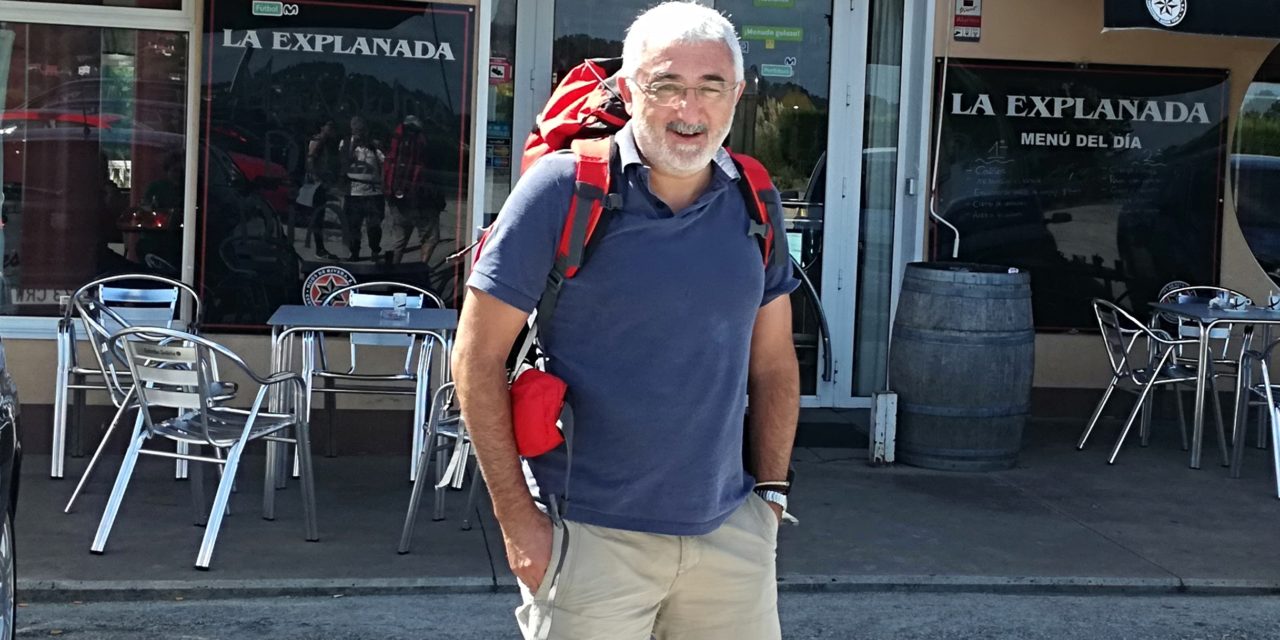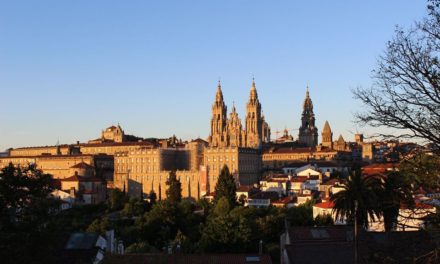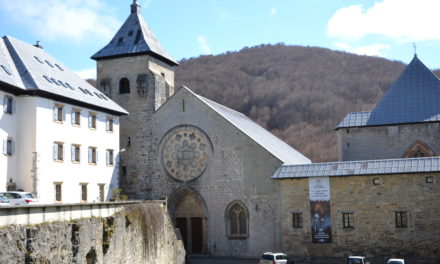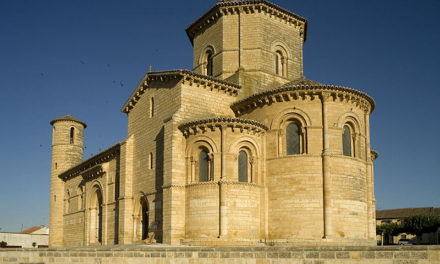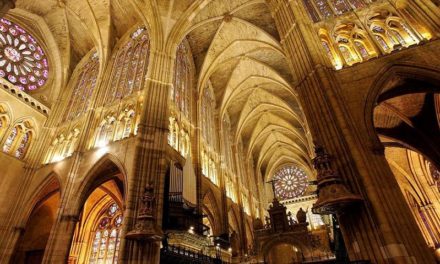Manuel F. Rodríguez is a journalist and a researcher. Recently he won the International Prize Aymeric Picaud and his life is a good example of dedication to the Camino de Santiago: from his intellectual production, his work on the Xacobeo of the Xunta de Galicia -especially linked to the Pilgrim Associations- and as a pilgrim himself. In recent years he has devoted particular attention to the English Way, about which we wanted to talk to him.
– Why the English Way, when and why did you decide to study it?
This happened in the nineties. When I was writing of a guide of the English Way for S.A. of Xestión do Plan Xacobeo, where I work, I discovered the relevance of this route. I found it fascinating to think of the thousands and thousands of medieval pilgrims travelling by sea from British ports and from northern Europe and France. Later we will publish some articles about it.
-The current certification of the Compostela is of such importance that it can create almost unfair situations, so that for years this route of the Way, starting from the city of A Coruña, did not achieve the popularity it deserves because it did not reach the 100 kilometers that were stipulated before a credential was awarded. Luckily, this problem has been recently resolved. Can you tell us something about this situation?
In 2016, the Cathedral of Santiago and Tourism of A Coruña suggested that I write a particular report in order to study the possibility of granting the ‘credential’ to pilgrims travelling from that town; in so much as it seemed unfair that pilgrims should be denied recognition for having travelled that route, simply on the grounds that it was less than 100 kilometres long. Thanks to this report and to the contributions of the Coruña Town Council and the Cathedral Chapter, an addendum was published in December 2016. It was a great step forward. But I think that the imposed condition – of having already done a St. James way before arriving in the Coruña region- should be eliminated. A Coruña was the great port of reception for pilgrims, a great distance from any other, such as Ferrol, Betanzos, Noia, etc. This evidence, confirmed by the documentation, should be more than enough. It would be an act of historical justice.
-The weight of the old pilgrimages on the English Way is huge, can you tell us something about your past? Do you think there are still things to discover or investigate?
It is amazing to think that from remote medieval Iceland pilgrims embarked for Santiago. It is a revealing example of the dimension of this phenomenon. During the early Middle Ages until the late sixteenth century, sea-going pilgrims were common, except during periods of war, political conflicts and epidemics. Although even under those conditions some pilgrims still arrived. But there is still a lot to research. It’s an exciting task for young historians. Those who are keen to conduct this research will have to address themselves to England, France, Germany, Ireland, etc., because it is in those countries where the bulk of the documentation is preserved. The first publication that discovered the relevance of the Jacobean maritime pilgrimage, and which confirms Coruña as the great European port of pilgrims, is that of the British historian Constance Mary Storrs. This admirable work dates from the nineteen sixties and has never been surpassed. Storrs, by the way, deserves to have a street named after her in A Coruña.
-For many pilgrims The English Way is an opportunity to experience a very special pilgrimage- first by sea by sea and then continuing afterwards on foot. We have both known members of maritime pilgrimages in the past … Do you think it will be possible to advance in this field?
I am a fervent defender of the aim of recovering the pilgrimage by sea. But with a minimum of historical rigor and respect for its identity. The Camino de Santiago lives from its identity. If little by little, as is happening in some cases, we ignore it or directly betray it, we are making a big mistake. We must be properly respectful of the enormous value of the Way. There are certain recent proposals that I, personally, do not like. Can it be considered a maritime pilgrimage if one travels some miles by boat and then finishes up with a very short walking tour from the Gozo mountain, which is on the French Way, and not on the English Way?
-The English Way as a land route allows many pilgrims to experience the pilgrimage even if they do not have many days at their disposal, because the two routes require only between 3 and 5 stages to reach Compostela. Do you think that the English Way could be a good route to start on the pilgrimage to Santiago?
I can speak from my own experience. In 2017, I made a special study on A Coruña as a Jacobean city. It was exciting. It was the confirmation of what I already knew in a less detailed way: that this city was the great historic port for pilgrims. Well, I celebrated its publication by doing the English Way on foot from A Coruña. I did it accompanied by a neighbor and one of my daughters. It took us three days and amounted to 75 km. We arrived, full of excitement in Santiago. We felt that in some way we were following in the footsteps of the old English, Irish pilgrims, etc. But, of course, we documented each Jacobean spot on the route, each temple or space which had had some significance for the pilgrims of the past, etc. That was why the experience was so enriching. I say it again and again: the DNA of the Camino are long distances, its European dimension. But in this case the English Way by land from A Coruña was always that, 75 km, no more. We knew it and we were respectful towards it. And somehow that respect rewarded us.
-I am very interested in your experience as a pilgrim, a specialist who experiences at first -hand what he has studied … Is there any monument or aspect of the Way that you think should be revalued or reintegrated into the current layout?
I can add to what I said previously. It is essential to bring to the surface the Jacobean sense of the Way. And not only of the English Way. The Camino de Santiago is being increasingly imitated as a successful experience in half the world. Many centers of Christian pilgrimage and other religions and cultures are generating routes in imitation of the Way. They even copy resources such as the pilgrim’s credential, the compostela, the sense of the most authentic hostels, etc. Therefore, the Jacobean being routes of greater specific historical weight, and among them is undoubtedly the English Way, need to be re-enforced and their identity underlined, which is of an amazing singularity. If not, little by little the most valuable pilgrim, both Spanish and foreigner, whether driven by religious or spiritual motivation or not, will lose the reference that the great historical world pilgrimage route is the Camino de Santiago, that the first official European Cultural Itinerary is the Camino de Santiago. It pains me that this essential question should have been neglected.
-An aspect highly valued by pilgrims who travel the English Way is that it is a little traveled route and one in which the local population is closely connected with the pilgrims. Some say that there you can live the experience of the pilgrimage as in the French Way 30 years ago … What was your experience as a pilgrim in this regard?
I have not made this route from Ferrol, its other official point of departure as an overland itinerary. From my experience doing it from A Coruña I can confirm that it is a little traveled route, although it has grown since the compostela was granted. It is true that the people you meet are kind. I remember a man running after us for several meters to warn us that we were going off route. We made efforts not to get lost in certain places because in 2017 the signposting was poor, and even then we got lost three times. And there would have been a fourth, had it not been for the generosity of that man. I also remember the great hospitality of a private hostel in Sigüeiro. But I dare not say that the English Way is like the French thirty years ago. Maybe, and maybe not.

